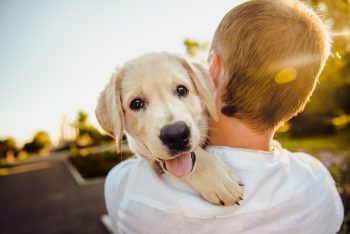This article explores the science behind dog recognition, examining their cognitive abilities and the senses they use. We’ll also look at practical ways to strengthen these bonds and help our dogs recognize their family members more effectively.
The Science Behind Dog Recognition
Canine Cognitive Abilities
Dogs possess impressive cognitive abilities that enable them to process and remember information about their environment and the individuals within it. Studies have shown that dogs can learn and remember a wide range of cues from their surroundings, including those related to their family members. Their brains are wired to interpret signals from multiple senses, allowing them to form complex associations.
Explore The Exceptional Memory Of These 10 Dog Breeds
Senses Used for Recognition
Dogs recognize family members using a combination of their senses—smell, sight, and hearing. Each of these senses plays a unique role in how dogs identify and remember people and other animals.
Smell: A dog’s sense of smell is incredibly powerful, estimated to be 10,000 to 100,000 times more sensitive than a human’s. This allows them to identify individuals by their unique scent signatures.
Sight: While dogs’ vision differs from humans, they are still able to recognize faces and body language. Dogs can discern familiar faces and expressions, contributing to their ability to recognize family members.
Hearing: Dogs have acute hearing and can recognize the voices and sounds associated with their family members. They can distinguish between different tones and pitches, aiding identification.
Recognizing Human Family Members
Facial Recognition
Dogs are capable of recognizing human faces, a skill that is vital for their interaction with people. Research has shown that dogs can distinguish between familiar and unfamiliar faces, indicating that they use visual cues to recognize their human family members. This ability helps them respond appropriately to different individuals based on their previous experiences and interactions.
Voice Recognition
Voice recognition is another significant way dogs identify family members. They can pick up on specific vocal tones, pitches, and inflections, allowing them to recognize and respond to the voices of those they are familiar with. This auditory ability is crucial for dogs, as it helps them differentiate between friends and strangers, enhancing their sense of security.
Scent Recognition
Scent plays a crucial role in how dogs recognize humans. Each person has a unique scent profile that dogs can detect and remember. This olfactory ability is why dogs can often identify their owners from a considerable distance and exhibit such strong reactions to the scents of their family members. Dogs use scent to form lasting memories, making it one of the most reliable recognition methods.
Enhance Your Dog’s Brain Function With These Top Supplements
Recognizing Other Canine Family Members
Littermate Recognition
Dogs can recognize their littermates through a combination of scent, sight, and sound. This recognition is often strongest in the early stages of life but can persist if the dogs remain in contact. Littermate recognition helps maintain social bonds and hierarchies within the group.
Mother and Offspring Recognition
Recognition cues such as scent and vocalizations facilitate the bond between mother dogs and their puppies. Mothers can identify their puppies and vice versa, essential for nurturing and protecting the young. This bond forms early and is reinforced through regular interaction and care.
Factors Influencing Recognition Abilities
Age and Development
A dog’s age and developmental stage can affect their recognition abilities. Puppies are more impressionable and can quickly form recognition patterns, while older dogs might rely more on established cues. As dogs age, their sensory abilities might decline, impacting their recognition skills.
Experience and Training
Experience and training play significant roles in enhancing a dog’s recognition abilities. Dogs regularly exposed to their family members and engaging in positive interactions are more likely to remember and recognize them. Training that reinforces these connections can further strengthen their recognition skills.
Practical Tips for Strengthening Recognition
Consistent Interaction
Regular and positive interaction with your dog helps reinforce recognition. Spending quality time, engaging in play, and maintaining routines can solidify the bond between you and your dog, making it easier for them to recognize you and other family members.
Positive Reinforcement
Positive reinforcement techniques, such as treats and praise, can help strengthen your dog’s recognition abilities. Rewarding your dog for responding correctly to recognition cues reinforces their learning and helps them associate family members with positive experiences.
Discover The Top 5 Breeds That Learn Human Words Easily
Conclusion: Understanding Dog Recognition Abilities
In conclusion, dogs can recognize their family members using cognitive skills and sensory inputs. By understanding these capabilities and fostering positive interactions, dog owners can enhance their pets’ recognition skills, leading to stronger, more meaningful relationships. Observing and interacting with your dog regularly while employing positive reinforcement can help ensure your furry friend remains connected to their human and canine family members. This understanding enriches your bond with your dog and contributes to their overall well-being and happiness.
The post Can Dogs Recognize Their Family Members? appeared first on iHeartDogs.com.

